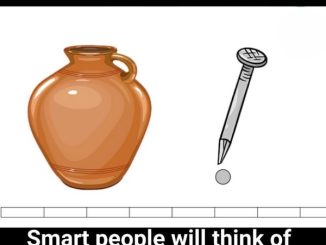Are you someone who loves a good brain teaser? Then this puzzle is right up your alley. At first glance, it looks simple: some chickens, eggs in a nest, and bunches of bananas. Easy enough, right? But when you reach the final equation, things get a little more complicated — and that’s exactly why it’s going viral across the internet.
So here’s the challenge: can you crack the final line of this puzzle without making the common mistakes most people fall into? Grab a notepad, zoom in on the image if needed, and test your powers of observation. Let’s find out how sharp your logic really is.

Why This Puzzle Traps So Many People
People tend to rush when solving visual math puzzles. They make quick assumptions and overlook subtle changes between lines. That’s exactly what makes this one so clever. It rewards those who slow down and examine each picture carefully — and punishes those who treat every item like a fixed symbol.
One of the biggest reasons people fail at this puzzle is because they assume the number of eggs and bananas never changes. That’s the trap. These details shift from line to line, and if you’re not paying attention, you’ll end up with the wrong answer — even if your math is technically correct.
Another common mistake is forgetting about the proper order of operations. Remember PEMDAS (Parentheses, Exponents, Multiplication and Division, Addition and Subtraction)? It still applies here, even in a fun puzzle with cartoon fruit and chickens.
Let’s Solve This Together, Step by Step
Alright, time to break this puzzle down line by line. We’ll assign a value to each item and explain how we arrived at the final solution.
First Equation: Chicken + Chicken + Chicken = 60
This is the foundation. There are three identical chickens, and their total value is 60.
So, 3 Chickens = 60
That means each Chicken = 60 ÷ 3 = 20
Now that we know the Chicken is worth 20, we move on.
Video :Chicken, Eggs, Bananas Puzzle
Second Equation: Chicken + Nest with Eggs + Nest with Eggs = 26
We already know the Chicken is worth 20. Plug that into the equation:
20 + Nest + Nest = 26
That simplifies to: Nest + Nest = 6
So each Nest = 3
Now look closely: each Nest contains three eggs. This means each egg is worth 1. It’s not the nest itself that holds the value — it’s the eggs in the nest. So whenever you see a nest, count the eggs.
Third Equation: Nest + Banana Bunch + Banana Bunch = 15
From the previous step, we know the Nest (3 eggs) is worth 3. Plug that in:
3 + Banana Bunch + Banana Bunch = 15
So, 2 Banana Bunches = 12
Each Banana Bunch = 6
Now here’s another important step: take a good look at the Banana Bunch. Each bunch contains six bananas, which means each individual banana is worth 1.
In later lines, if the number of bananas changes, the value of the bunch will change too.
Now the Final Equation: Chicken + Nest × Banana Bunch = ?
This is where it gets tricky, and where most people go wrong.
Let’s analyze each element one more time — paying attention to the small details in the image.
- Chicken: Same as before — still worth 20
- Nest: This time, there are four eggs, not three. That changes the nest’s value from 3 to 4
- Banana Bunch: Instead of six bananas, there are only four bananas this time. That changes the bunch value from 6 to 4
Now remember the order of operations — multiplication before addition.
So, we plug in:
Chicken + (Nest × Banana Bunch)
= 20 + (4 × 4)
= 20 + 16
= 36
Final Answer: 36

If you got 36, congratulations! You paid close attention to the changing visuals and used correct math. But don’t worry if you got it wrong — most people do, especially on their first try.
Mistakes Most People Make
Let’s quickly go over the top mistakes that lead to incorrect answers:
- Assuming all Nests and Banana Bunches are the same: The number of items in each image changes. This is the most common trap.
- Ignoring the number of eggs or bananas: People assume the illustration is symbolic. It’s not — the quantity matters.
- Forgetting PEMDAS: A lot of solvers add before multiplying. In math, multiplication always comes before addition unless parentheses say otherwise.
- Rushing: These puzzles are designed to trip you up if you don’t slow down and pay attention.
Why These Puzzles Are Great for the Brain
Beyond being fun and frustrating at the same time, puzzles like this one are a fantastic way to train your brain. They encourage:
- Careful observation
- Critical thinking
- Pattern recognition
- Patience and persistence
Solving these types of riddles can help keep your mind sharp — and let’s face it, they make for great conversations too.
Video : Solving Fruits Math Puzzles
Now It’s Your Turn
Did you get the answer right? Or did you fall into one of the traps?
We’d love to hear what you got — and how you approached solving it. Was it the changing bananas that caught you? Or the order of operations?
Drop your answer in the comments. Better yet, share this puzzle with a friend and see how they do. Just don’t give away the answer too quickly!
Want More Puzzles Like This?
If you enjoyed this one, we’ve got plenty more coming. From optical illusions to logic puzzles and viral riddles, there’s no shortage of fun ways to give your brain a workout.
So keep your mind sharp, stay curious, and remember — the smallest details often hold the biggest clues.


